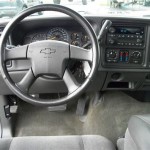How To Fix an Interior Car Door Handle
A malfunctioning interior car door handle can be a significant inconvenience and even a safety hazard. The inability to easily open a door from the inside can be frustrating in everyday situations and potentially dangerous in emergencies. This article provides a comprehensive guide on diagnosing and repairing common issues associated with interior car door handles, offering step-by-step instructions and troubleshooting tips to restore functionality and ensure passenger safety.
Before commencing any repairs, it is crucial to prioritize safety. Disconnect the car battery to prevent accidental electrical shorts during the process. Gather the necessary tools, which typically include a screwdriver set (Phillips and flathead), socket set, pliers, trim removal tools (or a plastic putty knife), and potentially a multimeter for electrical diagnostics. A well-lit workspace is also essential for clear visibility during the repair process. Additionally, having a repair manual specific to the vehicle make and model can provide valuable diagrams and instructions tailored to the vehicle's particular door handle mechanism.
Diagnosing the Problem
Accurate diagnosis is the foundation of effective repair. A systematic approach to identifying the root cause of the handle malfunction saves time and prevents unnecessary repairs. Several factors can contribute to a faulty interior door handle, ranging from mechanical issues to electrical problems. Therefore, a careful examination of the symptoms is required.
The first step is to visually inspect the door handle itself. Check for any obvious signs of damage, such as cracks, breaks, or loose connections. A loose handle might indicate a detached linkage or a stripped screw. Pay close attention to the handle's range of motion. A handle that moves freely but does not engage the door latch likely has a disconnected linkage. A handle that feels stiff or requires excessive force to operate may be experiencing friction due to corrosion or a seized cable.
Next, listen carefully as the handle is operated. Unusual sounds, such as grinding, clicking, or popping, can provide clues about the underlying problem. A grinding sound might suggest worn gears or friction within the mechanism. A clicking sound might indicate a broken pawl or a disengaged linkage. The absence of any sound when the handle is pulled suggests a complete disconnection or a broken cable.
Attempting to manually actuate the door latch mechanism can further pinpoint the source of the problem. With the door panel removed, carefully reach inside the door and attempt to operate the latch directly. If the latch operates smoothly when manually manipulated, the problem lies within the handle or its linkage. If the latch remains unresponsive, the issue likely resides within the latch mechanism itself, requiring further investigation.
For vehicles equipped with power door locks and handles integrated with the vehicle's electrical system, electrical testing may be necessary. Use a multimeter to check for voltage at the door handle wiring harness and the door lock actuator. A lack of voltage indicates a potential electrical fault, such as a blown fuse, a broken wire, or a malfunctioning switch. Refer to the vehicle's wiring diagram to identify the correct wires for testing and ensure proper grounding.
Mechanical Repairs: Linkage and Cables
Mechanical issues typically involve problems with the linkage that connects the handle to the door latch or the cable that transmits the handle's motion. These components are susceptible to wear, corrosion, and disconnection over time, leading to handle malfunctions. Addressing these issues often involves reattaching, replacing, or lubricating the affected parts.
If the linkage has become disconnected, carefully examine the connection points for signs of damage or wear. Plastic clips used to secure the linkage are prone to breaking or becoming brittle with age. Metal linkages may corrode, causing them to seize or break. Clean any corrosion with a wire brush and penetrating oil. Replace any broken or damaged clips and linkages. If the linkage is simply disconnected, reattach it securely, ensuring that the connection is firm and that the linkage moves freely.
In vehicles that use cables to actuate the door latch, inspect the cable for fraying, kinking, or stretching. A frayed or kinked cable can bind within its sheath, impeding the handle's motion. A stretched cable may not transmit sufficient force to fully actuate the latch. Replace any damaged cables with new ones, ensuring that the replacement cable is the correct length and type for the vehicle. Lubricate the cable with silicone grease to reduce friction and prevent future corrosion.
Pay close attention to the routing of the linkage or cable. Incorrect routing can cause binding or interference, preventing the handle from operating smoothly. Ensure that the linkage or cable follows the original path and that it is not obstructed by any other components within the door.
When replacing or reattaching linkages or cables, apply a small amount of grease to the pivot points and connection points to reduce friction and prevent corrosion. This will ensure smoother operation and extend the lifespan of the components. Test the handle's operation after each adjustment to ensure that the door latch engages and disengages properly.
Addressing Electrical Issues
For vehicles with electronically controlled door locks and handles, electrical problems can manifest as a non-responsive handle, intermittent operation, or erratic behavior. Diagnosing and repairing these issues requires a multimeter, a wiring diagram, and a basic understanding of automotive electrical systems.
Begin by checking the fuses associated with the door lock system. A blown fuse is a common cause of electrical malfunctions. Consult the vehicle's owner's manual or a wiring diagram to locate the correct fuse. Replace any blown fuses with a fuse of the same amperage rating. If the fuse blows repeatedly, it indicates a short circuit somewhere in the system, requiring further investigation.
Inspect the wiring harness that connects to the door handle and the door lock actuator. Look for signs of damage, such as frayed wires, corroded terminals, or loose connections. Repair any damaged wires by splicing them together and insulating them with electrical tape or heat shrink tubing. Clean corroded terminals with a wire brush and apply dielectric grease to prevent future corrosion. Ensure that all connections are secure and properly seated.
Use a multimeter to check for voltage and ground at the door handle wiring harness and the door lock actuator. Refer to the vehicle's wiring diagram to identify the correct wires for testing. A lack of voltage indicates a break in the circuit, such as a broken wire or a faulty switch. A lack of ground indicates a grounding problem, which can be caused by a loose or corroded ground connection. Trace the wiring back to its source to locate the break or ground fault.
The door lock actuator itself may be faulty. The actuator is a small electric motor that controls the locking and unlocking of the door. If the actuator is not receiving power or if it is making unusual noises, it may need to be replaced. Test the actuator by applying direct voltage to its terminals. If the actuator does not respond, it is likely faulty. Replace the actuator with a new one, ensuring that the replacement actuator is the correct type for the vehicle.
In some cases, the problem may lie within the vehicle's body control module (BCM). The BCM is a computer that controls various electrical functions in the vehicle, including the door locks. If the BCM is malfunctioning, it may not be sending the correct signals to the door lock actuator. Diagnosing and repairing BCM issues requires specialized tools and knowledge. Consult a qualified automotive technician if you suspect a problem with the BCM.
After completing any electrical repairs, test the door handle and door lock system thoroughly. Ensure that the handle operates smoothly and that the door locks and unlocks properly from both the inside and the outside of the vehicle. Reconnect the car battery and verify that all other electrical systems are functioning correctly.

Fixing A Broken Car Door Handle Interior

Fixing A Broken Car Door Handle Interior

How To Replace An Interior Car Door Handle Yourmechanic Advice

How To Remove And Replace A Broken Interior Door Handle On Your Car

Bmw Door Handle Ling How To Fix It Colorbond Paint

How To Replace Interior Door Handle On Any Vehicle

Bmw Door Handle Ling How To Fix It Colorbond Paint

Car Truck Inside Door Handle Latch Broken Diy Fix

Bmw Door Handle Ling How To Fix It Colorbond Paint
2003 2007 Honda Accord Interior Door Handle Replacement 2004 2005 2006 Ifixit Repair Guide
Related Posts








